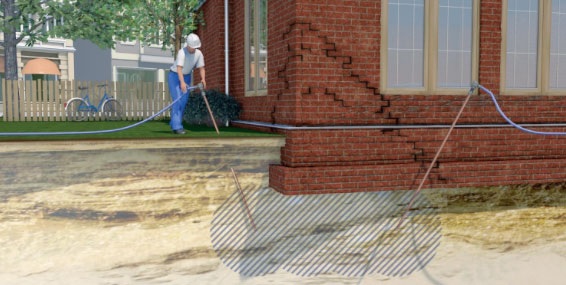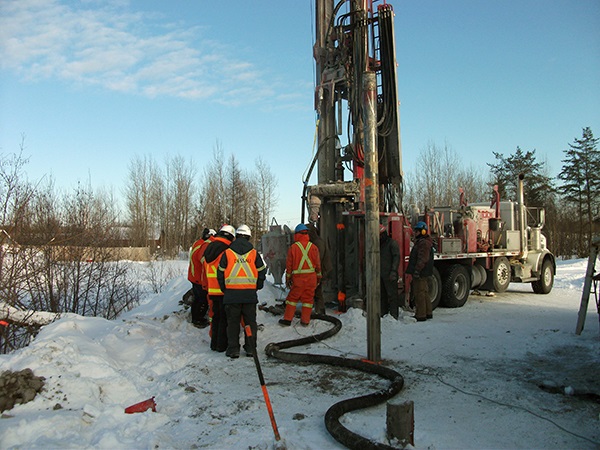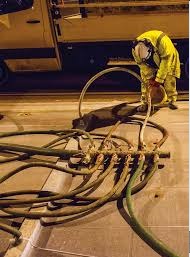Injection grouting system can be deemed a reinforcement technique due to its cost-effectiveness and ease of construction. It is a process of application of new material in cracks/voids/honeycombs in concrete surfaces. The system involves filling Cement slurry or waterproofing chemical for reducing crack, voids, and honeycomb from the concrete. This process is adopted to repair damaged old concrete structural members and strengthen them. Grouting can be done in various methods but the injection method is adopted for accuracy and time-saving. This technique is widely used for all types of structures, masonries, repair works to maintain strength and durability.
Advantages of injection grouting system
- Easy to apply
- Fast-setting
- High penetration capacity
- Suitable to both RCC / NON-RCC) structures
- Prevents soil permeability and water leakage
- Well-suited for the repair of foundation in old construction
- Durable
- Increases soil density
Different methods of injection grouting system
Injection grouting techniques were developed to simply fill a void in the soil. It is gaining immense popularity worldwide owing to its easy use system. Discussed below different methods of injection grouting system.
Permeation Grouting
Permeation grouting, also known as penetration grouting, is the most common and conventional grouting method. It involves filling any cracks, joints or void in rock, concrete, soil and other porous materials. The idea is to fill a void without displacing the formation or creating any change in volume or configuration in the medium. This is typically done to strengthen the existing formation, creating an impermeable water barrier or both. There are two forms of permeation injection systems: a circulating grout system and a direct grout system.

Compaction Grouting
Compaction Grouting involves an injection of low mobility grout via drill casings that are drilled/driven to pre-set depths. The grout, usually composed of cement, sand, fly ash and water, is placed from the bottom-up with pressure-based criteria. After each consecutive stage, the drill casing is lifted upwards until it is entirely taken out. Compaction Grouting is also commonly known as Low Mobility Grouting.

Fracture Grouting
Fracture grouting uses a low viscosity grout that splits through the ground by hydraulic fracturing and penetrates into the fractures. The in situ soils are displaced and soil immediately next to the fractures are densified, but to a lesser extent than compaction grouting. Fracture grouting can also be referred to as compensation grouting and is commonly used to relevel structures.
Jet Grouting
Jet grouting uses a high-pressure ‘jet’ of either grout, water, air or a combination to erode soil whilst simultaneously injecting grout into the soil through a ‘jet monitor’. The specially designed drill stem and monitor are raised and rotated at the same time to combine the grout with the original soil to form ‘soilcrete’. The end product is cemented round columns and is basically effective in any soil but not necessarily efficient in every soil.

Vacuum Grouting
Vacuum Grouting Interestingly, although grout is typically propelled by pressure, if a void is placed under pressure then the grout can be ‘sucked’ in – this is known as vacuum grouting.

Applications of injection grouting system
Injection grouting can be used for filling the cracks, open joints, voids, or honeycombs with material that cures in place to produce the desired results like strengthening a structure and preventing water movement. Its application areas include.
- Concrete surfaces
- Tunnel linings
- Stone masonries
- Dam
- Settlement of foundation
- Masonry
- Underground structure
Premiumtechnical.com,groutingspecialist.com,geotech.net.au,balfourbeatty.com, technovawaterproofing.com



